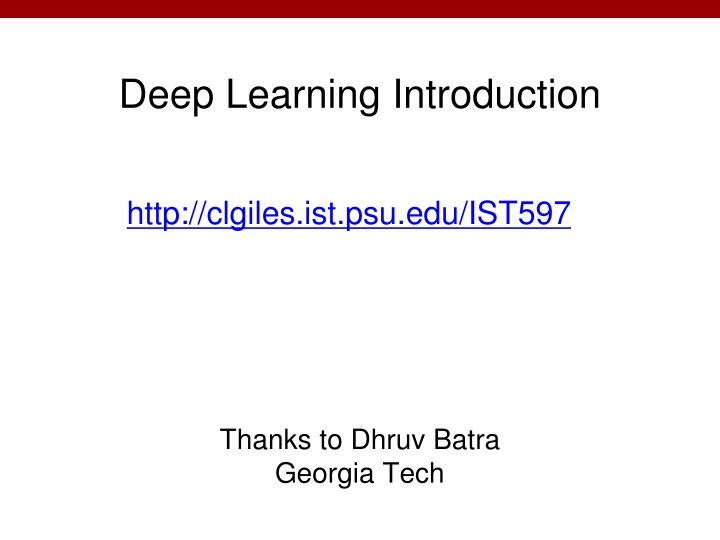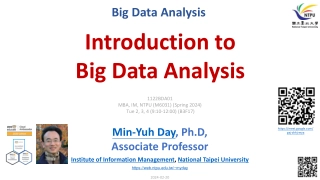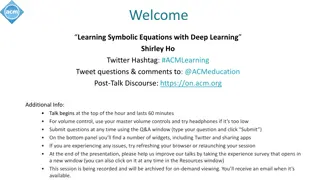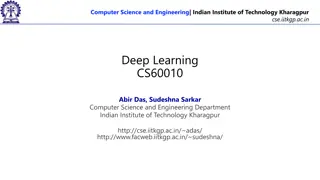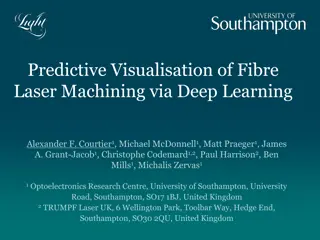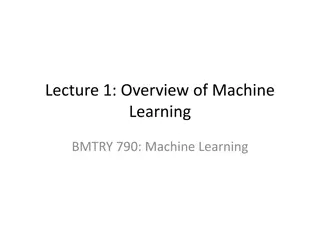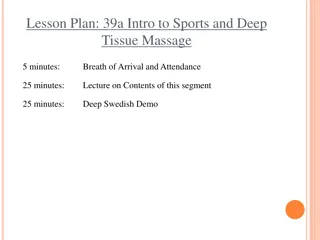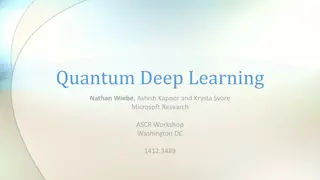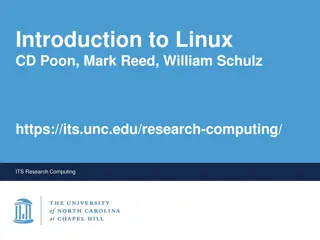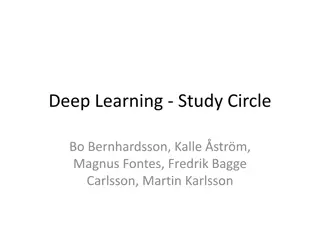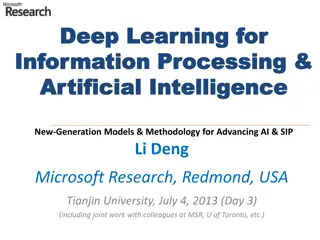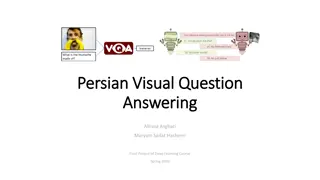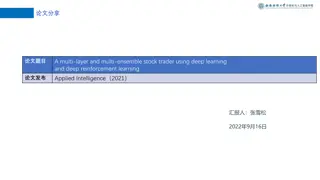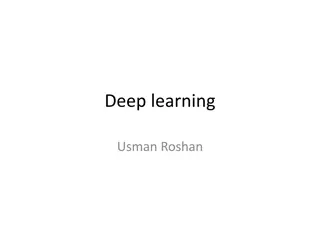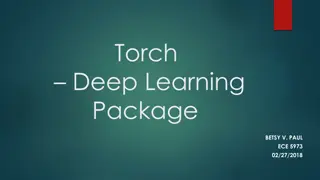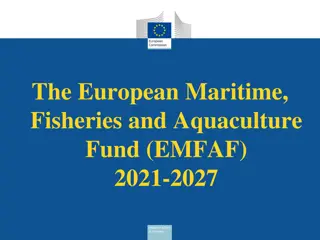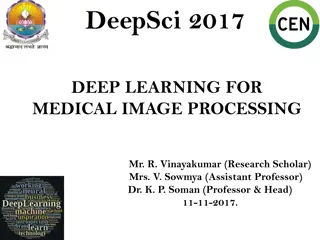Deep Learning Introduction and Course Overview
This course provides a comprehensive introduction to Deep Learning, with a focus on practical applications using TensorFlow and Python. The course covers topics such as class outlines, coding exercises, paper reviews, presentations, and project goals. Students will engage in hands-on coding projects, paper analysis, and presentations to deepen their understanding of Deep Learning concepts and techniques.
Download Presentation

Please find below an Image/Link to download the presentation.
The content on the website is provided AS IS for your information and personal use only. It may not be sold, licensed, or shared on other websites without obtaining consent from the author.If you encounter any issues during the download, it is possible that the publisher has removed the file from their server.
You are allowed to download the files provided on this website for personal or commercial use, subject to the condition that they are used lawfully. All files are the property of their respective owners.
The content on the website is provided AS IS for your information and personal use only. It may not be sold, licensed, or shared on other websites without obtaining consent from the author.
E N D
Presentation Transcript
Deep Learning Introduction http://clgiles.ist.psu.edu/IST597 Thanks to Dhruv Batra Georgia Tech
Class Course outline and materials at https://clgiles.ist.psu.edu/IST597 5 exercises, all in TensorFlow/Python - 40% One large research/application project 50% Two class presentations on the project One class presentation on selected papers 10%
Coding This is a coding course. We will help you get started in TensorFlow For this course you must already know how to code. We do not teach you how to code. This is a hands on course. You will build an application using TensorFlow or PyTorch for your project.
Paper Reviews Length 200-400 words. Due: Midnight before class Organization Summary: What is this paper about? What is the main contribution? Describe the main approach & results. Just facts, no opinions yet. List of positive points / Strengths: Is there a new theoretical insight? Or a significant empirical advance? Did they solve a standing open problem? Or is a good formulation for a new problem? Or a faster/better solution for an existing problem? Any good practical outcome (code, algorithm, etc)? Are the experiments well executed? Useful for the community in general? List of negative points / Weaknesses: What would you do differently? Any missing baselines? missing datasets? any odd design choices in the algorithm not explained well? quality of writing? Is there sufficient novelty in what they propose? Has it already been done? Minor variation of previous work? Why should anyone care? Is the problem interesting and significant? Reflections How does this relate to other papers we have read? What are the next research directions in this line of work? Powerpoint presentation in class
Presentations Frequency Three in the semester One for the paper review and two for the project Expectations Present details Describe formulation, experiment, approaches, datasets Encouraged to present a broad picture Show results; demo code if possible Please clearly cite the source of each slide that is not your own and other citations
Project Goal Chance to try Deep Learning Encouraged to apply to your research (computer vision, NLP, robotics, ) Must be done this semester. Can combine with other classes get permission from both instructors; delineate different parts Extra credit for shooting for a publication Main categories Application/Survey Compare a bunch of existing algorithms on a new application domain of your interest Formulation/Development Formulate a new model or algorithm for a new or old problem Theory Theoretically analyze an existing algorithm Competitions Compete in a machine learning competition (ongoing or completed) using deep learning
Collaboration Policy Collaboration Only on project You may discuss the questions Each student writes their own answers Write on your homework anyone with whom you collaborate Each student must write their own code for the programming part No plagiarism Neither ethical nor in your best interest Always credit your sources Don t cheat. We will find out.
